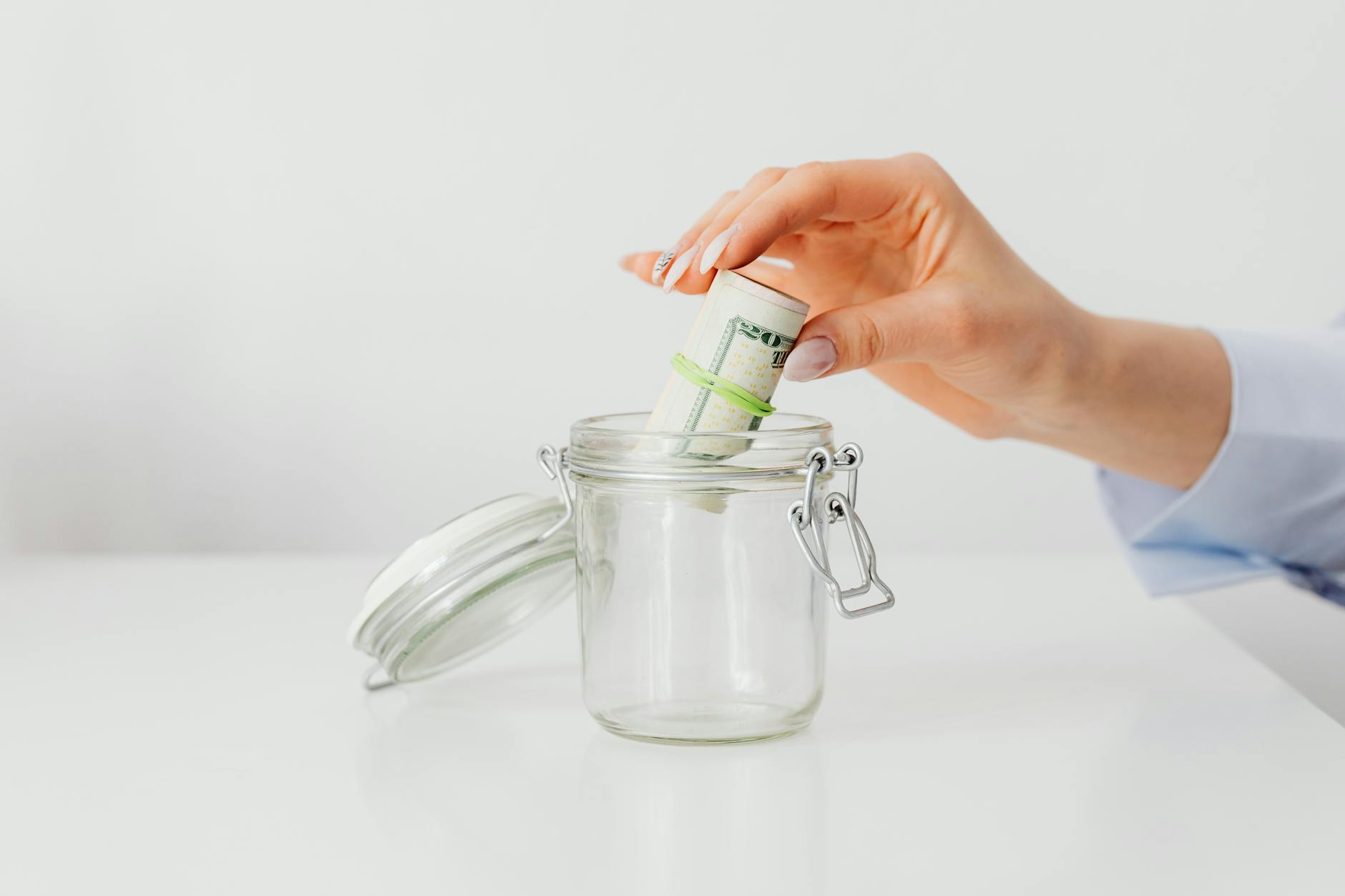Taking care of yourself should not be costly. In fact, self-care and smart budgeting go hand in hand, and when you prioritize both, the benefits can be life-changing.
Whether it’s finally making room for those small indulgences or finding healthier ways to tackle stress, aligning self-care with your budget is one of the most empowering steps you can take for your well-being.
This guide on Self-Care on a Budget. will walk you through simple, actionable tips to balance your finances while nurturing yourself.
From creating space in your budget for self-care essentials to understanding why those moments matter, you’ll see how these adjustments can transform your everyday life in a meaningful way.
If you’re ready to feel in control and supported, this resource is a great starting point for learning how empowerment can be built on a budget—without guilt.
You’ve got this! Let’s explore how small, thoughtful changes can lead to a happier and healthier you.
Self-Care and Budgeting
You might think of self-care as spa days or expensive trips, but the truth is, self-care is much simpler and far more personal than that.
And when it comes to budgeting for it? That’s about finding balance—not breaking the bank. Let’s break this down together.
1. What Does Self-Care Look Like?
Self-care is anything that helps you feel good—mind, body, or soul. It’s showing up for yourself in ways that feel restorative and meaningful.
For some, this means physical wellness: going for a jog, eating nutritious meals, or getting enough sleep. For others, it’s mental relaxation, like journaling, meditating, or even watching a favorite show guilt-free.
Sometimes, self-care is about little joys: a perfectly brewed cup of coffee, a crisp new book, or those moments when you feel like the best version of yourself.
It’s not all luxury; it’s doing what makes you feel recharged. And those small joys? They’re just as valid as the bigger practices when it comes to caring for yourself.
If you struggle with putting yourself first, remember: self-care is not selfish. Through taking care of yourself, you’re better prepared to take care of others too.
2. Why Financial Wellness Is Self-Care
Money stress can keep you up at night. On the flip side, gaining control over your finances gives back freedom.
Imagine the peace of mind knowing all your bills are paid on time, or the happiness of having money set aside for that weekend getaway.
Financial wellness is not just dollars and cents. It’s removing the anxiety that comes from not having a plan. A simple budget can be empowering—like a roadmap that tells your money exactly where to go.
Tasks like setting up a savings goal or finding ways to trim unnecessary expenses aren’t chores; they’re acts of self-care. They’re you saying, “I’ve got this.”
According to resources like Penn Community Bank’s guide, financial self-care is one of the biggest stress-reducers.
After all, mental clutter often starts with financial concerns. Plus, budgeting doesn’t mean deprivation—it means clarity. When you know what you can afford, treating yourself feels guilt-free and way more satisfying.
Together, self-care practices and solid financial habits create a foundation that feels both balanced and fulfilling. It’s self-love with a practical twist—and you’ve got all the tools to make it happen.
Steps to Create a Budget That Supports Self-Care
You don’t need a massive income to take care of yourself. In fact, creating a budget that prioritizes self-care is about mindfulness and small adjustments.
The right plan helps you say “yes” to the things that refill your tank without feeling financially strapped.
Let’s break it down into simple steps—because self-care and financial wellness go hand in hand.
3. Assess Your Income and Expenses
Photo by maitree rimthong
The first step is knowing where your money is going. Track your expenses for a full month—yes, even that $5 coffee!
Breaking down your spending habits gives real insight into where you might be overspending. Tools like expense tracker apps or a simple spreadsheet can be game changers here.
Some popular budget apps like YNAB (You Need A Budget), Mint, or PocketGuard make this process easy by linking to your accounts.
Bonus: they often send a handy pie chart of your spending, so you can visualize where changes might be needed.
For more help with organizing your self-care needs alongside financial goals, check out this stress management resource for ideas that keep life balanced.
4. Identify Needs vs. Wants
This part may feel tricky at first, but trust me, it’s worth it. Ask yourself: What’s essential, and what could you live without?
Think of “groceries” as a need and a “Netflix subscription” as a want. Sure, the newest iPhone might be tempting, but if your current one works fine, it may not belong in the needs column.
When you identify what matters most, it gets easier to align your spending habits with your values.
This doesn’t mean you have to eliminate every want from your life—it’s about balance. If relaxing at home with a subscription gives you serious joy, maybe it’s okay to keep it.
Not sure where to start? Try journaling about what truly supports your self-care routine versus what’s just draining your account. (If you’re in need of excellent reflection exercises, check out this guide.)
5. Allocate a Self-Care Fund
Now that you’ve created some clarity, it’s time to set aside money to nurture yourself. Start small—even just 2-5% of your monthly income can make a difference. For instance:
- Treat yourself to your favorite snack once a week.
- Save up $20-$30 for a massage or spa day.
- Invest in your mental well-being with a journal or meditation app.
The beauty of budgeting for self-care is that it doesn’t have to be extravagant. No need to drop hundreds on luxury—sometimes, even simple outlets like taking yourself out for a $5 scoop of ice cream can feel like pure magic.
Through following these simple steps, you can carve a space in your budget for what matters most—your well-being! Stay tuned for more ideas about creating a life that’s balanced, peaceful, and financially sound.
Affordable Self-Care Ideas
When you’re thinking about self-care, it doesn’t have to be fancy or expensive to be meaningful. The goal is to nurture yourself while staying kind to your wallet.
These affordable ideas prove that you can feel refreshed and centered without overspending.
6. Free Activities That Nourish You
Not everything that brings joy has to cost a dime. Sometimes the simplest practices can make the biggest impact on your mood and well-being. Here are some ideas to get you started:
- Journaling: Grab a notebook or even scrap paper and take a few minutes to write your thoughts and feelings. This can help clear your mind and give you clarity.
- Walking in the park: A stroll surrounded by nature does wonders for mental and physical health. You don’t need fancy shoes—just enjoy the fresh air.
- Taking long baths: Add some music, a podcast, or just quiet time. This mini-escape can feel like a luxurious retreat right at home.
Low-Cost Treats to Consider
You don’t have to sacrifice fun or relaxation to stay within your budget! Low-cost self-care treats can bring joy without causing financial stress. These are a few affordable options worth trying:
- At-home spa day: Light some candles, play calming music, and indulge in a facial using affordable drugstore masks. Bonus points if you whip up a DIY option with pantry staples like honey and oatmeal.
- DIY projects: Tap into your creative side with crafts, painting, or upcycling old furniture. Not only is this activity meditative, but you’ll also have something tangible to enjoy or share later.
- Cooking a special meal or treat: Try making a comfort dish or baking cookies. It’s therapeutic and satisfying—plus, homemade always tastes better.
Looking for more ideas on balancing finances and pampering yourself? Dive into this guide on financial wellness and mental health for practical tips.
Affordable self-care is prioritizing yourself in ways that feel sustainable and joyful. With these ideas, you’re on your way to a happier and more centered you.
Overcoming Common Challenges
Prioritizing self-care within a budget can feel overwhelming. You might wrestle with guilt, or feel limited when finances are tight.
But here’s the truth: self-care involves creating space in your life for what makes you thrive. Below, we’ll tackle two common challenges you might face and provide actionable ways to overcome them.
7. Dealing with Guilt Around Spending on Self-Care
Photo By Kaboompics.com
Have you ever caught yourself thinking, “Should I be spending on this?” when considering a self-care activity?
It’s so common to feel guilt about putting yourself first, especially if you’re juggling other financial responsibilities. But shifting your mindset can make a huge difference.
Try this: think of self-care as an investment, not a cost. Just like you wouldn’t hesitate to maintain your car to keep it running smoothly, caring for yourself ensures you can keep showing up for your job, your loved ones, and your goals.
When you invest in activities or tools that enhance your well-being, you’re not being frivolous—you’re reinforcing your foundation.
One way to ease this guilt is to start small. Budgeting even $10 a month for a personal treat makes self-care feel attainable without strain. Over time, these small gestures accumulate into long-term wellness.
8. What to Do When Money Is Tight
We’ve all been there: your budget is tight, and self-care feels like a luxury you can’t afford. But taking care of yourself doesn’t always require spending cash.
Here are some quick swaps and strategies:
- Swap costly habits for free alternatives: Instead of a pricey gym membership, head outdoors for a walk or try free workout videos online.
- Use what you already have: Your pantry could double as a DIY spa toolkit—think oatmeal face masks or sugar scrubs.
- Stay connected: Self-care includes nurturing relationships. Free activities like a coffee chat with friends at home can do wonders for your mood.
Knowing where to start can feel daunting, but breaking it into steps helps. This resource—Financial Stability and Confidence—can guide you in crafting a realistic budget while keeping self-care intact.
If you’re still unsure, remember that the best self-care is about consistency, not cost. Whether it’s creating moments of calm through meditation or exploring free relaxation practices, you have countless ways to care for yourself.
For further inspiration, Investopedia highlights additional strategies for overcoming financial stress.
Every step you take, no matter how small, brings you closer to a more balanced life. Self-care on a budget isn’t just possible—it’s empowering.
Sustaining the Habit of Budgeting and Self-Care
Learning how to budget for self-care isn’t just a one-time effort—it’s a lifestyle adjustment. The good news? Building this habit gets easier with small, intentional steps over time.
Let’s look at two key ways you can stick to your plan and make it work for you long-term.
9. Regularly Reviewing Your Budget
Staying consistent with budgeting doesn’t have to feel overwhelming. A simple monthly review can keep you on track and help you see where adjustments are needed.
Think of it as a check-in with your goals, like measuring your progress towards a healthier and more balanced life.
Here’s how to simplify the process:
- Set a reminder: Pick a date each month to sit down with your budget. Make it non-negotiable, like a doctor’s appointment or lunch with a friend.
- Use tools to help: Budgeting apps like Mint, YNAB, and PocketGuard do a lot of the work for you. They categorize expenses, show patterns, and even suggest areas where you might save.
- Look for trends: Are you spending too much in one area? Are you staying consistent with your self-care fund? This review offers clarity.
Through staying proactive, you’re not just managing money—you’re building financial confidence.
Need help defining success and happiness on your terms? Check out this guide to help align your values with your goals.
10. Celebrating Your Progress
Budgeting and self-care can feel like small victories—and they should be celebrated!
Through recognizing milestones, you’re reinforcing positive habits and creating motivation to keep going. Every step forward matters, no matter how tiny it feels.
Here are some ways to celebrate:
- Track your wins in a journal: Did you save $50 this month to put toward something fun? Write it down. Seeing what you’ve accomplished reminds you of the progress you’re making.
- Reward yourself meaningfully: When you hit a goal—like sticking to your budget for three months or paying off a debt—treat yourself. It could be as simple as a movie night at home or a special meal.
- Share your journey: Sometimes talking about your wins with a friend or partner can make it even more satisfying.
Remember, self-care isn’t just physical or mental—it can also be financial. Feeling strong in your money habits supports every other part of your well-being.
For more inspiration, explore this article on building habits that fuel personal growth and success.
Through regularly reviewing your plan and taking moments to appreciate how far you’ve come, you’re turning budgeting into self-care. It’s a practice of kindness not just toward your wallet, but toward yourself, too!
Final Thoughts – Self-Care on a Budget
Making room for self-care in your budget is not just possible—it’s empowering. Small, thoughtful adjustments to your spending can bring joy, peace, and clarity to your life.
Remember, self-care is not about monetary value; it’s feeling recharged and ready to take on the world. A little planning sets the stage for long-term well-being.
Why not take one small step today? Start by setting aside even just a small percentage of your earnings for something that makes you feel good.
Need inspiration? Check out these simple self-care practices to get started.
Love what you see? Share the love with friends and pin it to your Pinterest. Every share and pin means the world to us, helping us inspire more people.
Subscribe and share now—let’s make positive changes together.





